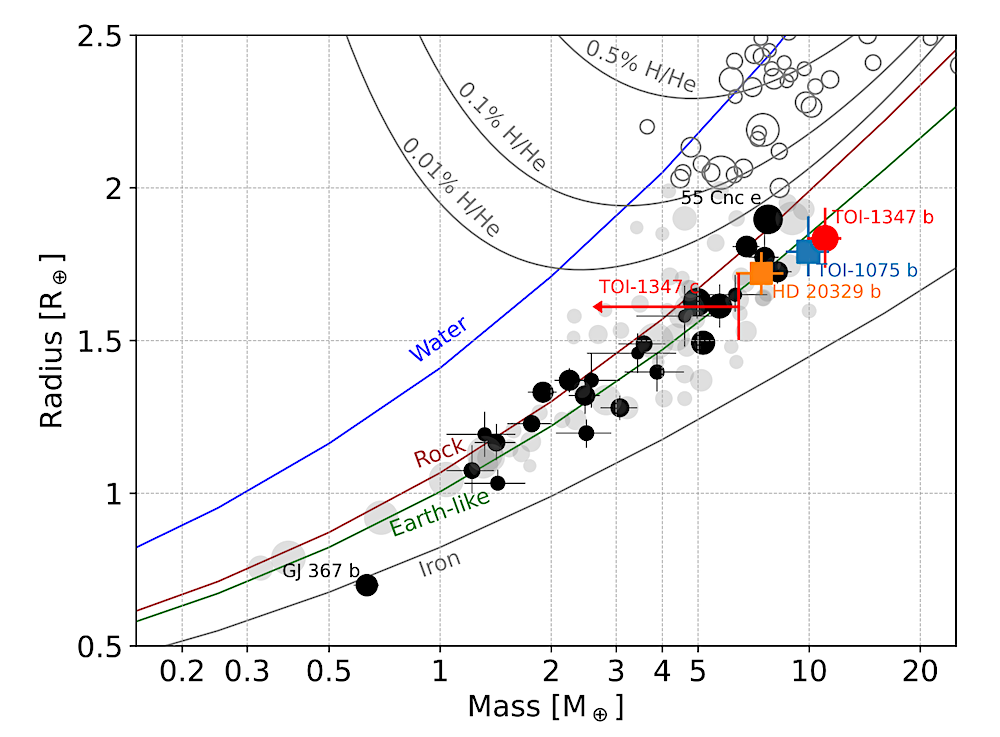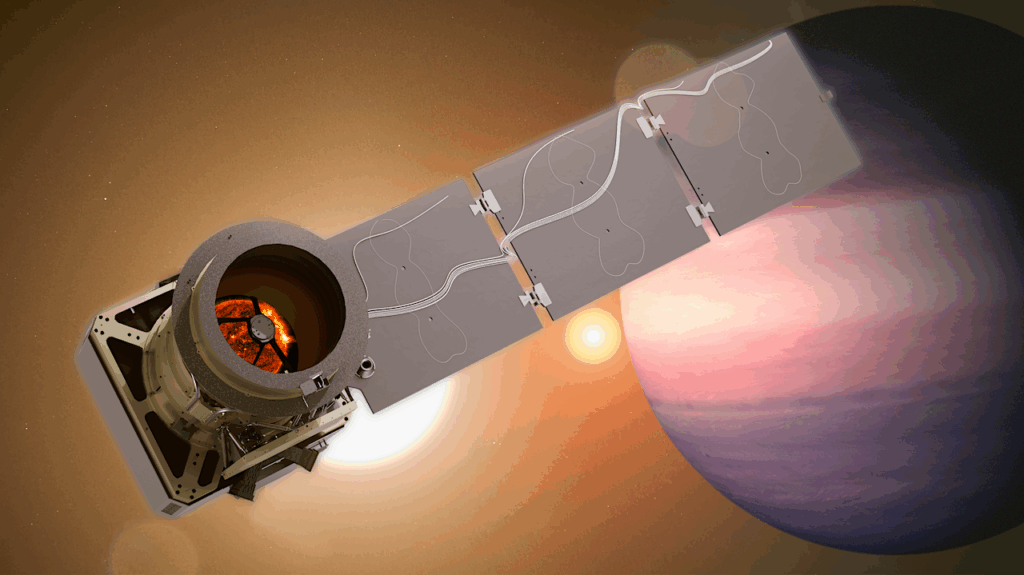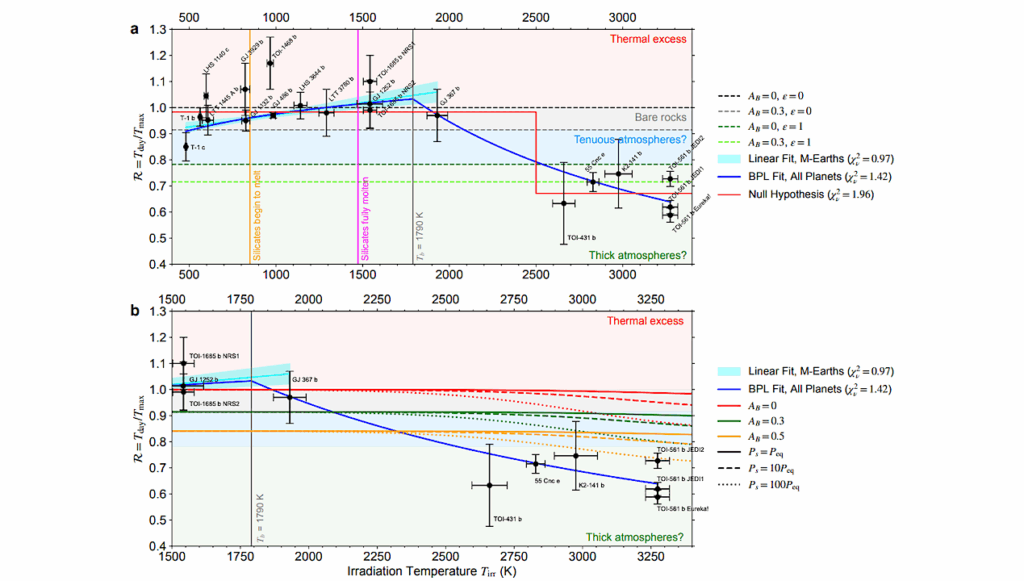The TESS-Keck Survey. XII. A Dense 1.8 R⊕ Ultra-Short-Period Planet Possibly Clinging to a High-Mean-Molecular-Weight Atmosphere After the First Gyr

The extreme environments of ultra-short-period planets (USPs) make excellent laboratories to study how exoplanets obtain, lose, retain, and/or regain gaseous atmospheres.
We present the confirmation and characterization of the USP TOI-1347 b, a 1.8±0.1 R⊕ planet on a 0.85 day orbit that was detected with photometry from the TESS mission. We measured radial velocities of the TOI-1347 system using Keck/HIRES and HARPS-N and found the USP to be unusually massive at 11.1±1.2 M⊕. The measured mass and radius of TOI-1347 b imply an Earth-like bulk composition.
A thin H/He envelope (>0.01% by mass) can be ruled out at high confidence. The system is between 1 and 1.8 Gyr old; therefore, intensive photoevaporation should have concluded. We detected a tentative phase curve variation (3σ) and a secondary eclipse (2σ) in TESS photometry, which if confirmed could indicate the presence of a high-mean-molecular-weight atmosphere. We recommend additional optical and infrared observations to confirm the presence of an atmosphere and investigate its composition.

Mass-radius diagram of known super-Earths (Rp < 2 R⊕, filled circles) and sub-Neptunes (4 R⊕ > Rp ≥ 2 R⊕, empty circles) with 5σ or better mass measurements, obtained from the NASA Exoplanet Archive (NASA Exoplanet Archive 2019). Bold fill denotes USPs. Contours from Zeng et al. (2016) are drawn for pure-iron, Earth-like (30% iron, 70% rock), pure-rock, and pure-water compositions. Contours from Chen & Rogers (2016) are also drawn for 0.5%, 0.1%, and 0.01% H/He envelopes surrounding rocky-composition cores, at an age of 1.4-Gyr-old and at the maximum insolation flux of 400 S⊕ for their model grids; it is worth noting that TOI 1347 b (1400 K, A = 0.7) receives an insolation flux of around 3000 S⊕. Our mass-radius constraints for TOI-1347 b and c (95% upper limit in mass) are plotted and labelled in red. The size of each point is proportional to M/σM. TOI-1347 b is the most massive super-Earth USP to date, while TOI-1347 c is smaller but likely also rocky. — astro-ph.EP
Ryan A. Rubenzahl, Fei Dai, Andrew W. Howard, Jack J. Lissauer, Judah Van Zandt, Corey Beard, Steven Giacalone, Joseph M. Akana Murphy, Ashley Chontos, Jack Lubin, Casey Brinkman, Dakotah Tyler, Mason G. MacDougall, Malena Rice, Paul A. Dalba, Andrew W. Mayo, Lauren M. Weiss, Alex S. Polanski, Sarah Blunt, Samuel W. Yee, Michelle L. Hill, Isabel Angelo, Emma V. Turtelboom, Rae Holcomb, Aida Behmard, Daria Pidhorodetska, Natalie M. Batahla, Ian J. M. Crossfield, Courtney Dressing, Benjamin Fulton, Daniel Huber, Howard Isaacson, Stephen R. Kane, Erik A. Petigura, Paul Robertson, Nicholas Scarsdale, Teo Mocnik, Tara Fetherolf, Luca Malavolta, Annelies Mortier, Aldo Fiorenzano, Marco Pedani
Comments: 22 pages, 9 figures, accepted for publication in The Astronomical Journal
Subjects: Earth and Planetary Astrophysics (astro-ph.EP)
Cite as: arXiv:2402.07451 [astro-ph.EP] (or arXiv:2402.07451v1 [astro-ph.EP] for this version)
Submission history
From: Ryan Rubenzahl
[v1] Mon, 12 Feb 2024 07:15:23 UTC (4,390 KB)
https://arxiv.org/abs/2402.07451
Astrobiology








